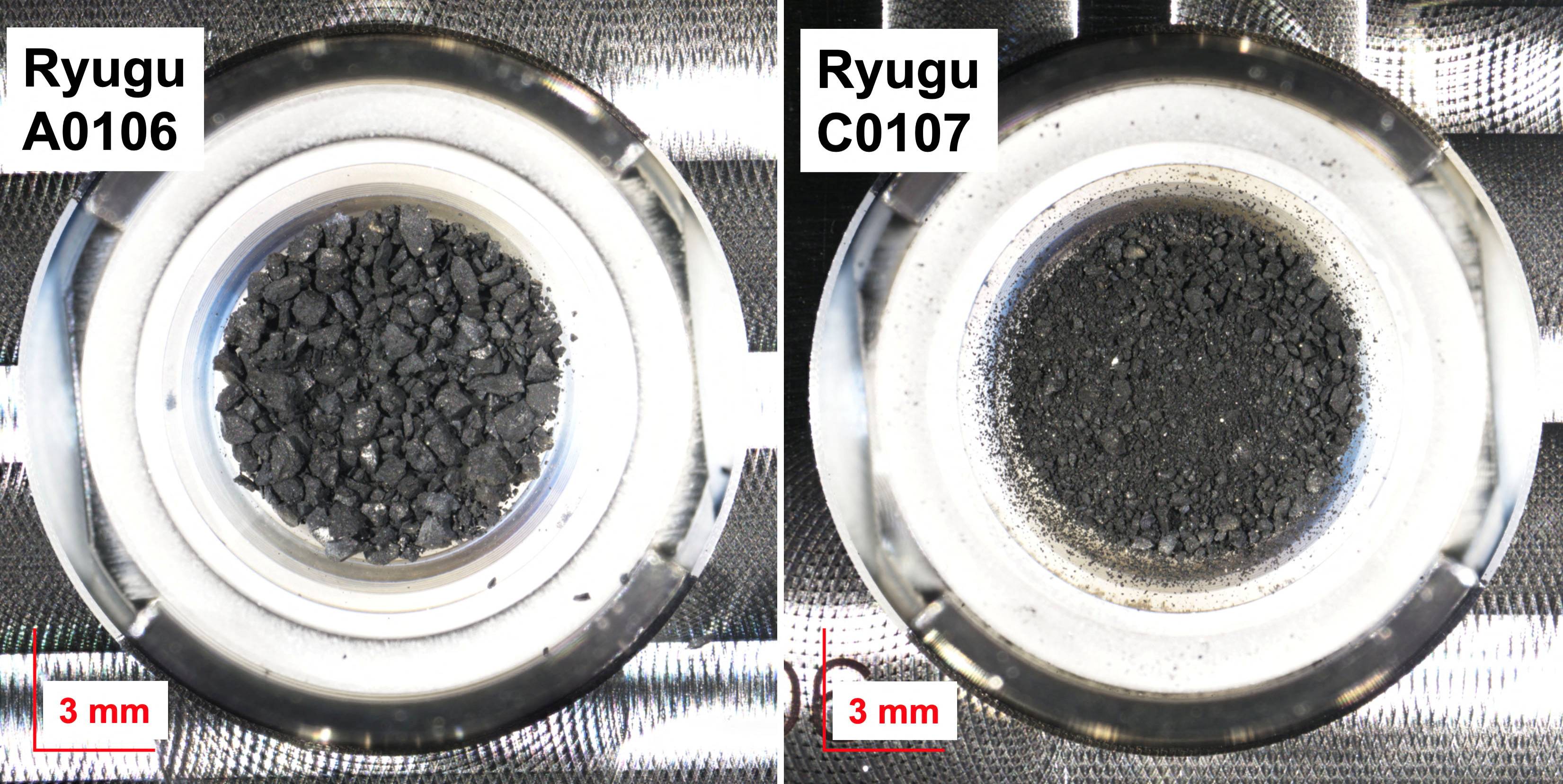The Miraculous Outer-Worldly Emergence of Life
 |
| Japan's Hayabusa2 capsule containing samples collected from the asteroid Ryugu returned to Earth in December 2020. JAXA |
"Our key finding is that uracil and niacin, both of which are of biological significance, are indeed present in extraterrestrial environments and they may have been provided to the early Earth as a component of asteroids and meteorites.""We suspect they had a role in prebiotic evolution on Earth and possibly for the emergence of first life.""These molecules on Ryugu were recovered in a pristine extraterrestrial setting. It was directly sampled on the asterioid Ryugu and returned to Earth, and finally to laboratories without any contact with terrestrial contaminants.""We found uracil in the samples in small amounts, in the range of 6-32 parts per billion (ppb), while vitamin B3 was more abundant, in the range of 49-99 ppb.""Other biological molecules were found in the sample as well, including a selection of amino acids, amines and carboxylic acids, which are found in proteins and metabolism, respectively."Astrochemist Yasuhiro Oba, Hokkaido University, Japan
 |
| A graphic shows some of the molecules found in samples taken from the asteroid Ryugu by the Japan Aerospace Exploration Agency's Hayabusa2 mission NASA/JAXA/Dan Gallaghe |
In the past, scientists had detected key organic molecules in carbon-rich meteorites discovered on Earth. The question always lingered whether these rocks that littered Earth from outer space had on arrival been contaminated by exposure to the environment of Earth itself. The presence of the organic compounds were understood to be the building blocks of biological life, but whether they were natural to Earth's environment or had been introduced from outer space via the arrival of meteorites and other random space objects hitting Earth was long a matter of speculation.
That puzzle appears now to have been solved. Samples retrieved from the asteroid Ryugu have been proven to carry two organic compounds essential for the emergence of living organisms. The notion that some ingredients critical for the advent of life arrived integrated into rocks from space billions of years ago, arriving to 'fertilize' Earth's gradual process of primeval lifeforms was finally supported by the discovery brought to laboratories revealing the presence of the compounds.
Scientists announced the detection of uracil and niacin in the rocks that the Japanese Space Agency Hyabusa2 spacecraft obtained from two sites on Ryugu in 2019. One of the chemical building blocks for RNA, a molecule carrying directions for building and operating living organisms is uracil, while niacin (Vitamin B3 or nicotinic acid), is vital for their metabolism.
 |
| Carbonaceous rock samples retrieved from the asteroid Ryugu that were subjected to chemical analysis by Hayabusa2 soluble organic matter (SOM) team members | COURTESY OF JAXA / VIA REUTERS |
In appearance the Ryugu samples resemble dark-grey rubble. They were transported 250 million kilometres back to Earth, returning to the surface of our planet in a sealed capsule that landed in 2020 in the remote outback of Australia, prior to eventual analysis in Japan. The origins and conditions required for the appearance of life after Earth was formed about 4.5 billion years ago has long been a matter of speculation for scientists.
The hypothesis that bodies like comets, asteroids and meteorites that bombarded early Earth seeded the planet with compounds leading to the emergence of the first microbes has thus been validated.Without uracil, RNA, short for ribonucleic acid would not be possible. A molecule, RNA is present in all living cells, vital in coding, regulation and activity of genes. RNA shares structural similarities with DNA, a molecule which carries the genetic blueprint of an organism.
Niacin is vital in underpinning metabolism, aiding in the production of "energy" that powers living organisms. Uracil, niacin and some other organic compounds in the Ryugu samples were extracted by the researchers through immersing the material in hot water.
 |
| The "clean room" at Kyushu University in Fukuoka where scientists analyze rock samples retrieved from the asteroid Ryugu | KYUSHU UNIVERSITY/HOKKAIDO UNIVERSITY / JAMSTEC / VIA REUTERS |
Labels: Asteroid Ryugu, Building Blocks of Life, Japanese Space Agency, University of Hokkaido

0 Comments:
Post a Comment
<< Home